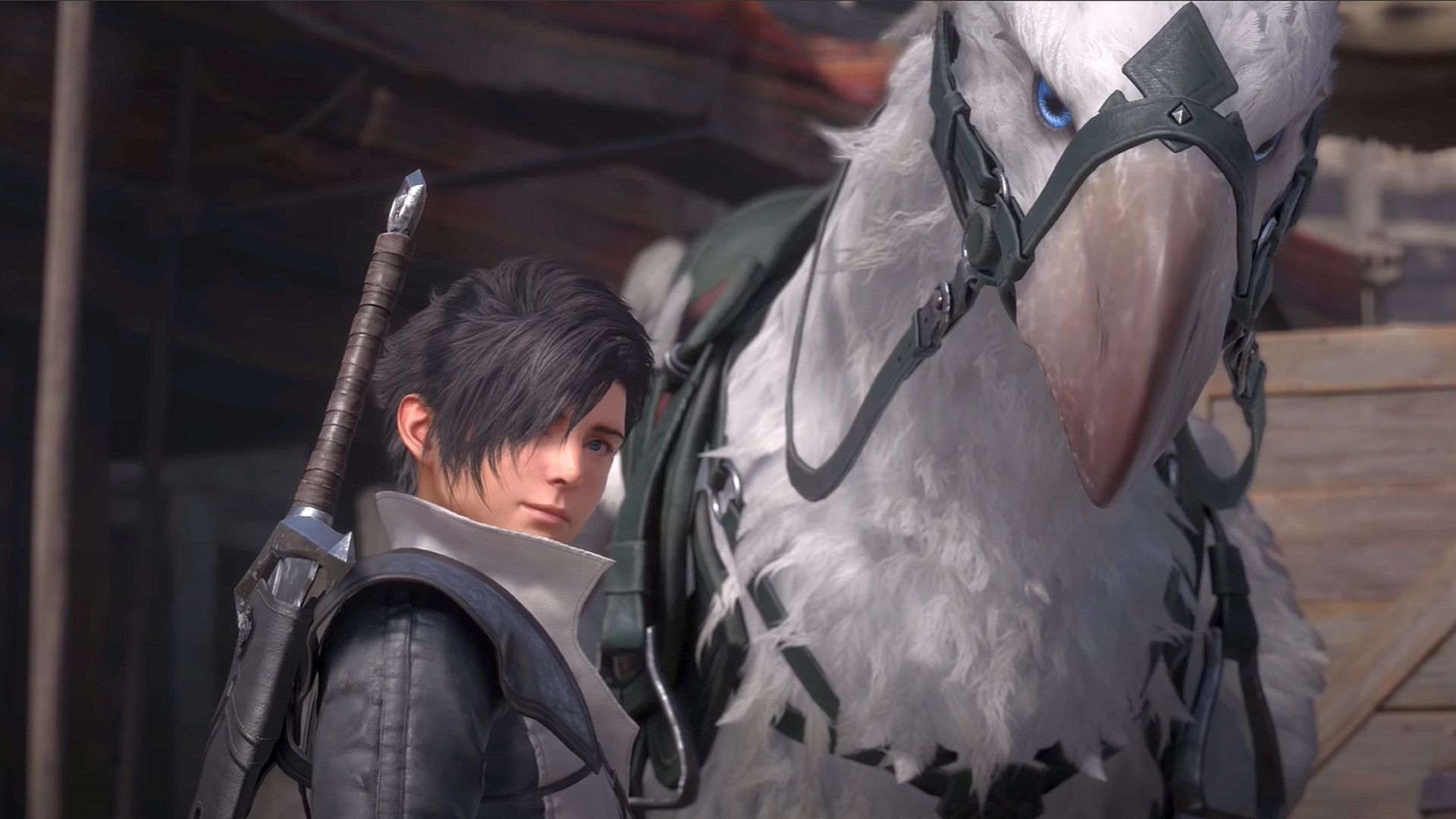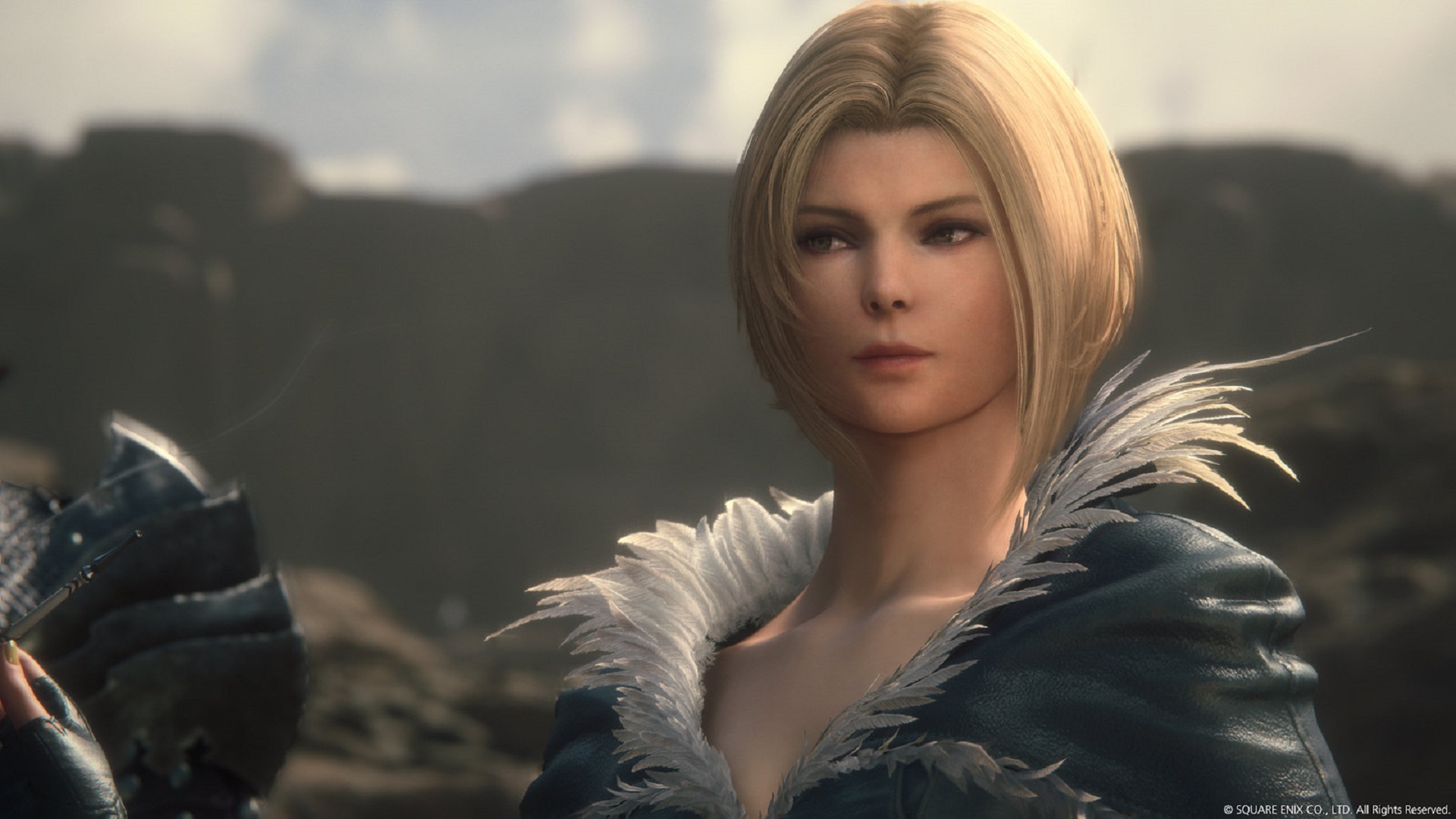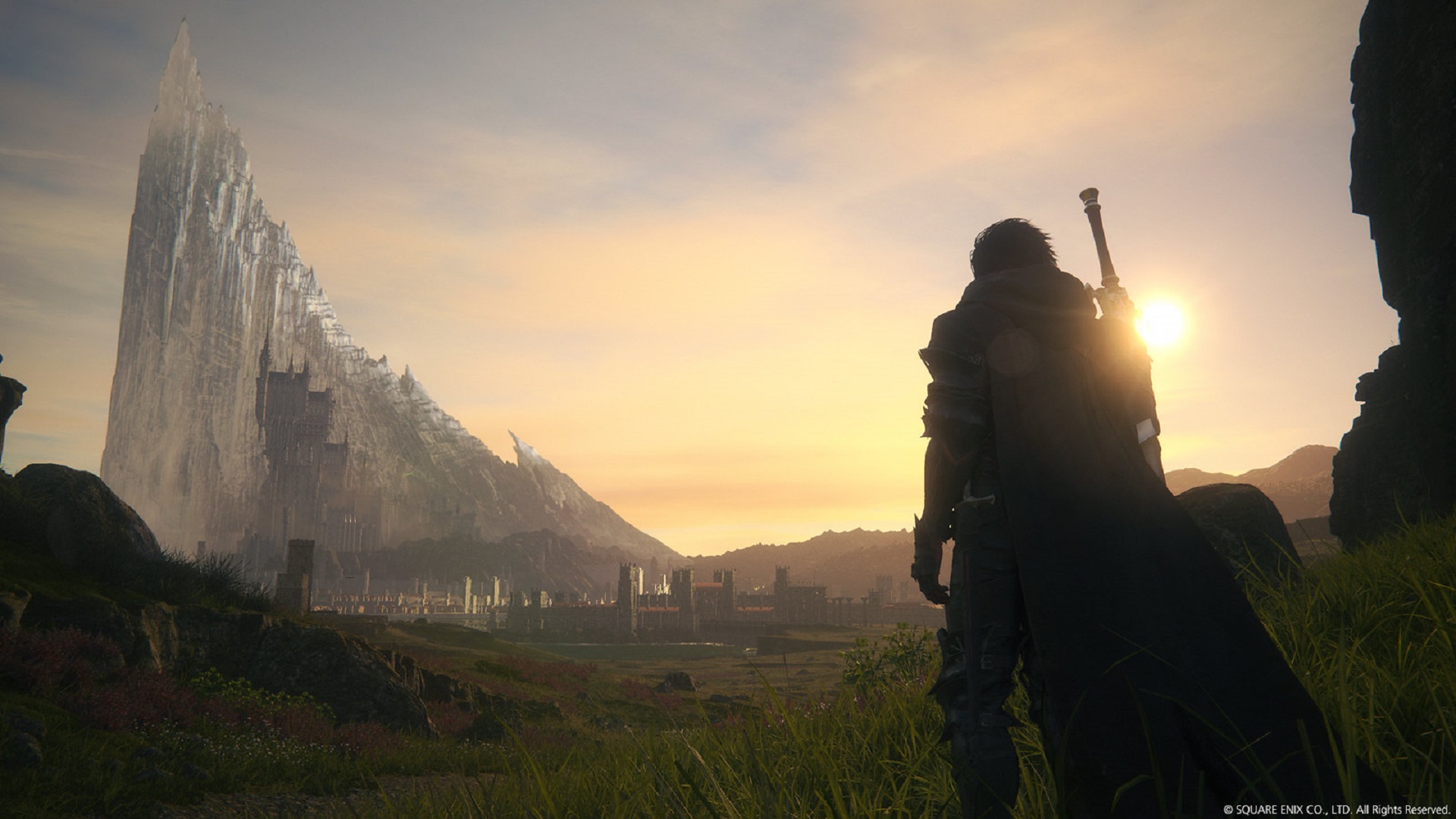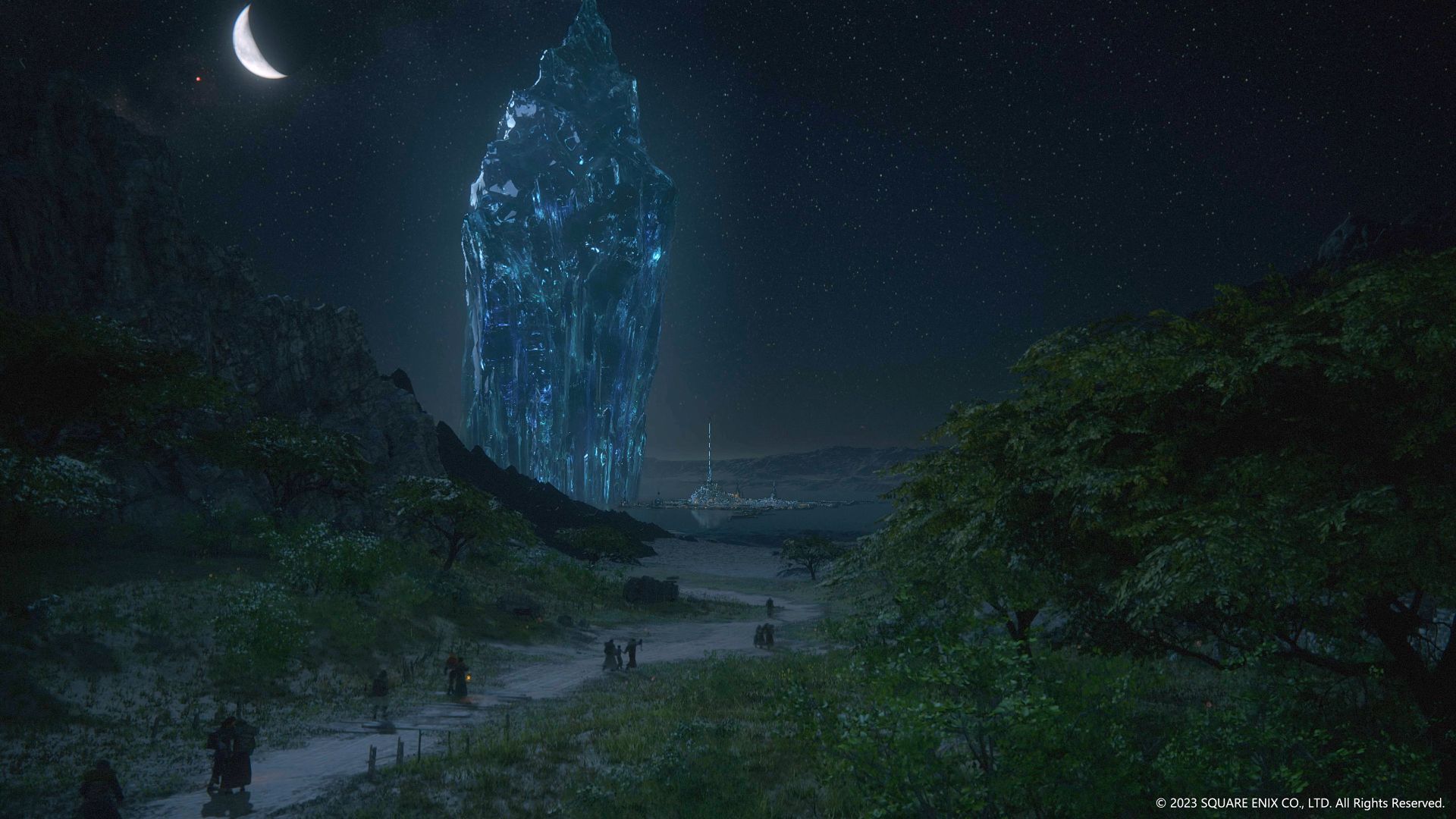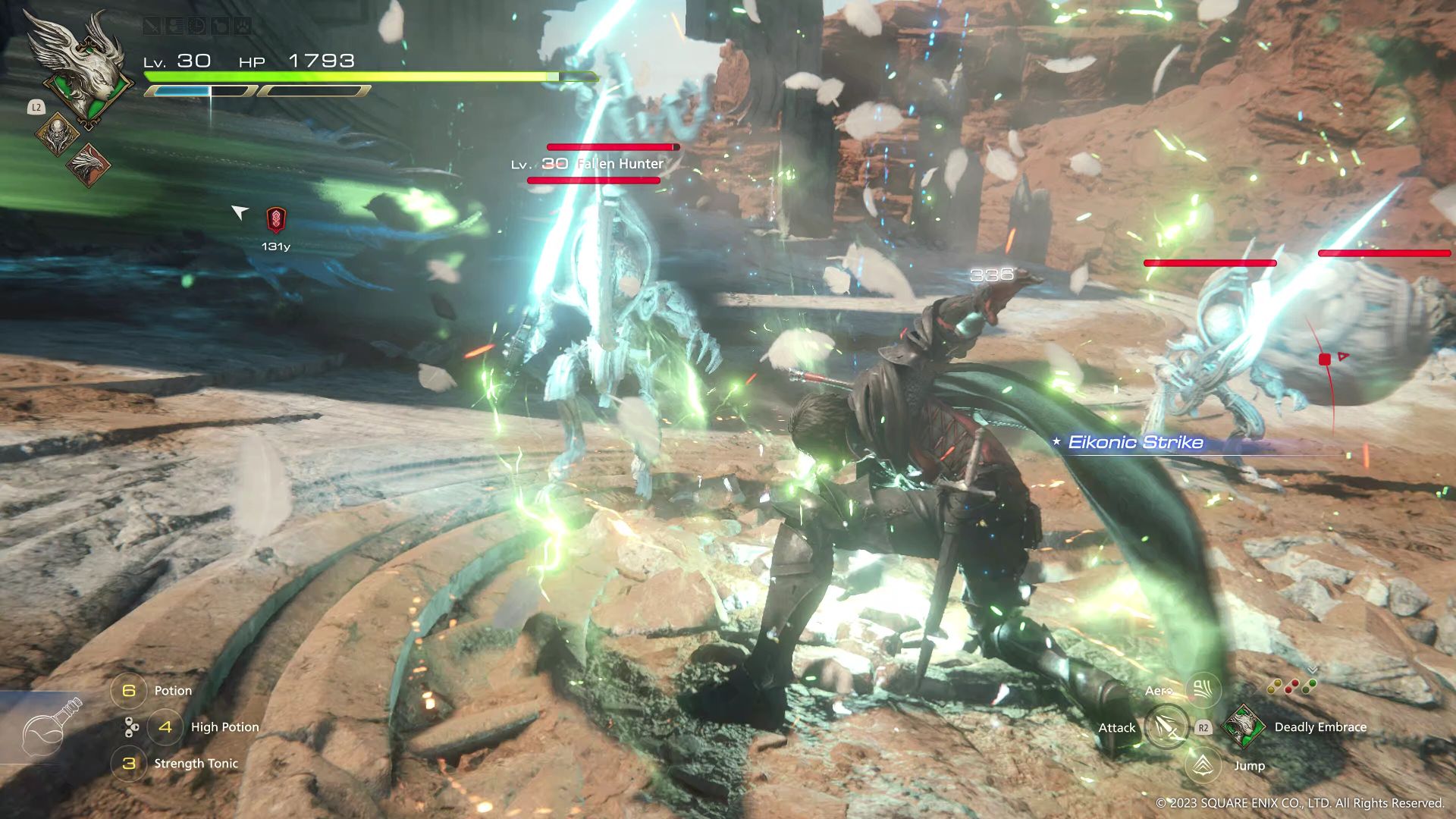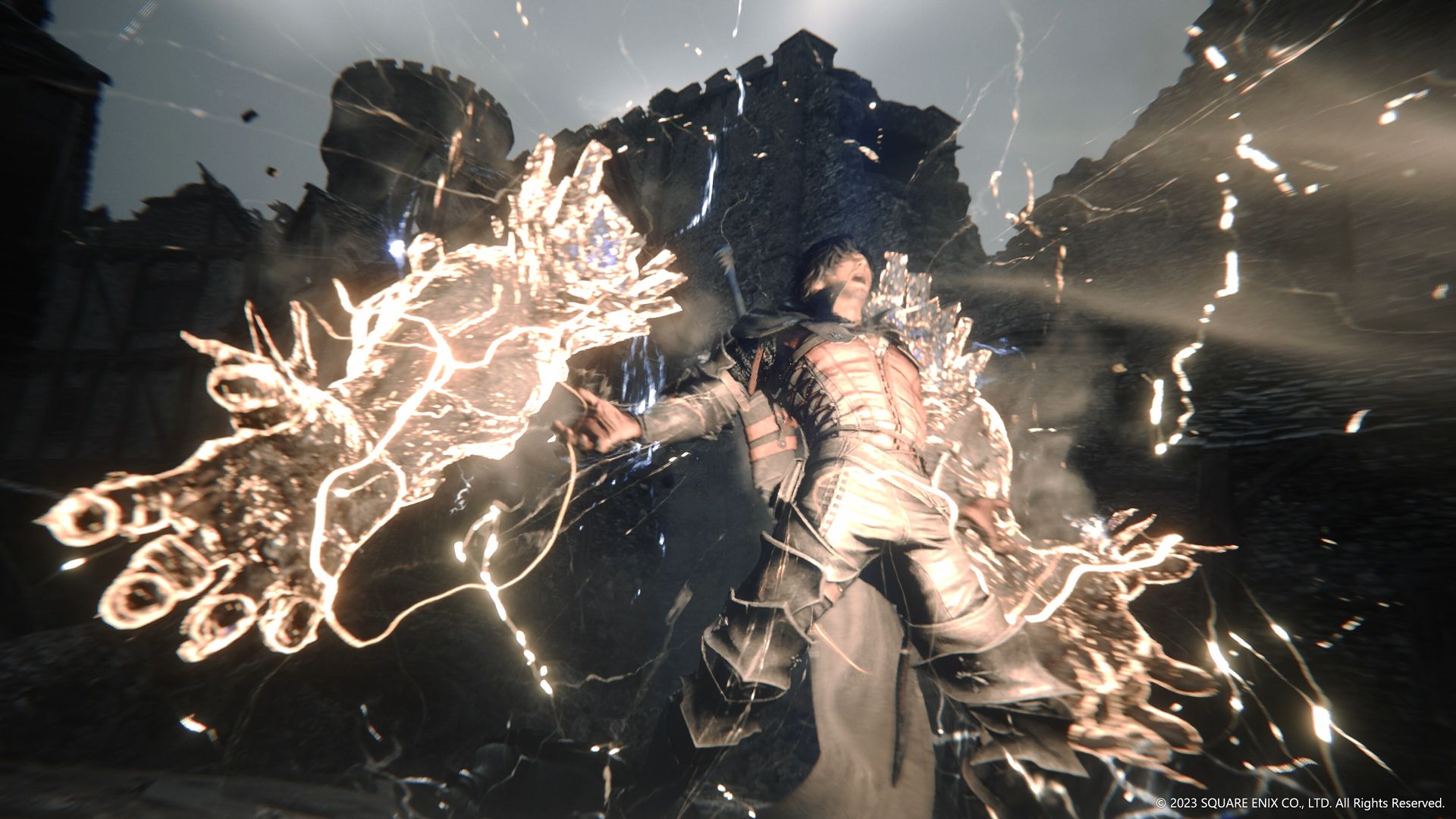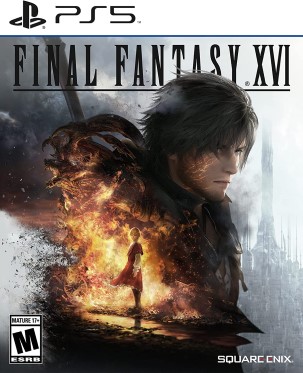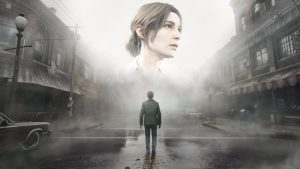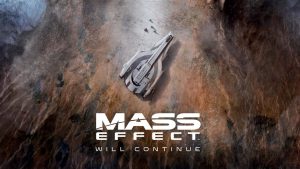
What does Final Fantasy mean to you?
Over the past many years, it’s meant several things to different people. A new world to explore with incredible visuals and production values. A massively multiplayer online experience with evolving stories, raids, and activities to experience with others. Iconic characters, who have transcended their original game to become pop culture icons, returning in a classic tale, remade for the modern day.
It could also be nostalgia, a time when role-playing games were more streamlined and not focused on open worlds, Sphere Grids, Gambits and cooking (not that anything is inherently wrong with those mechanics). However, at its core, Final Fantasy has always focused on three core tenets – the presentation, the story and the combat. It always stood at the forefront of visual standards, delivering an experience technically superior to its contemporaries but also artistically accomplished.
"Final Fantasy 16 is a triumph and easily Square Enix’s best title since…well, a certain critically acclaimed MMORPG, also produced by Naoki Yoshida."
The story-telling isn’t just Good vs Evil, but the characters, their trials and tribulations, and how their fates are tied to that of the world. Discrimination, coming of age tales, rebellion, revenge, redemption, love – Final Fantasy has incorporated all these story beats and more throughout its illustrious history. Finally, the combat, a signature of each game where, despite the change in scenario and setting, reminds one that they’re playing a Final Fantasy title. It’s more than just turn-based mechanics or an Active-Time Bar – it’s strategic but over-the-top. Easy to get into (and abuse), but also cinematic.
Final Fantasy 16 is a throwback in many ways and a big step forward in others. It’s not aiming to revolutionize the genre or redefine what Final Fantasy means for its many fans but to bring it forward to a new generation. To say it succeeds would be an understatement. This isn’t just one of the best role-playing games of the year or an emotionally wrenching, memorable story with writing on par with the genre’s best.
Final Fantasy 16 is a triumph and easily Square Enix’s best title since…well, a certain critically acclaimed MMORPG, also produced by Naoki Yoshida.
The story begins, as it always does, with the Crystals. Valisthea is the setting, with several realms at odds, from the Empire of Sanbreque and the Kingdom of Waloed to the Dhalmekian Republic and the Iron Kingdom. The Crystalline Dominion has an armistice with all the realms, but each is motivated by the same thing: The Mothercrystals. They allow for using magic, which does everything from cooking and watering crops to waging war. Certain people are born as Bearers and can wield magic without needing crystals but are considered slaves to do the nobles’ bidding or untouchables at the very worst.
"The dialogue is some of the best in the genre, but things not conveyed by speech are equally amazing. A pause and shift in camera angle; gestures are unnoticed but still conveyed."
Players control Clive Rosfield of the Grand Duchy of Rosaria. Despite being Duke Elwin’s eldest son, he’s not in line for the throne – instead, that honor goes to his younger brother, Joshua, the Dominant of the Phoenix. Dominants are an anomaly in Valisthea, serving as hosts for powerful Eikons. They can either wield the Eikons’ powers as their own or transform into massive beings for even more widespread destruction. This hasn’t escaped the notice of each realm, who use their Dominants and Eikons to wage war, shifting the tides back and forth.
As the First Shield of Rosaria, Clive has a few powers courtesy of the Phoenix and is sworn to protect his brother. However, after journeying to Phoenix Gate, tragedy befalls Joshua. Despite doing almost everything in his power, Clive barely survives. Betrayed and cast off, he’s drafted into the Imperial Army and branded. However, despite going through Hell for 15 years and slaying many enemies, he’s motivated by one thought: Revenge, specifically against a mysterious individual present at Phoenix Gate during that fateful night.
This is one of the most incredible openings to a video game. We’re introduced to Clive, Joshua and their close friend Jill Warrick (also Torgal, when he was a pupper). The situation in Rosaria, and the overall mood of its neighbors, coupled with the encroaching and mysterious Blight, are quickly and masterfully outlined.
The dialogue is some of the best in the genre, but things not conveyed by speech are equally amazing. A pause and shift in camera angle; gestures are unnoticed but still conveyed. The cinematography and facial animations in the cutscenes are great. While the expressions during regular conversations may not be quite as exquisite, they’re still good and backed by some incredible voice acting.
"The insane thing is that almost every character in Final Fantasy 16 is believably realized, feeling like honest-to-goodness people instead of extras on a stage."
Of course, it’s impossible to talk about the voice acting without discussing the characters. Clive is many things, initially coming off as dour and unapproachable but quickly unravelling to showcase someone beaten down emotionally and physically. He struggles with trust but still cares deeply for his friends. When he opens up, Clive is capable of some strong banter, even if he plays the straight man to Cidolfus, who invites Clive to his Hideaway of rescued Bearers and Branded. Overall, actor Ben Starr nails the gravel and gloom of Clive, and the emotional bursts of anger, sadness and happiness.
Cidolfus or Cid appears to embrace that swashbuckling demure of Final Fantasy 12’s Balthier, which Ralph Ineson (who also played Lorath Nair in Diablo 4) delivers on capably. However, beneath the sarcasm and quick wit is a nuanced individual, sometimes self-doubting, but even if he knows something is a bad idea, he pulls through for his friends. He’s an excellent foil to Clive and never feels overplayed or over-the-top.
Jill Warrick also deserves mention. Played by actor Susannah Fielding, she balances idealism and justice with measures of doubt and regret. There is a deeper layer to her suffering and quest for redemption and a bond with Clive that goes beyond words. Their relationship forms a core part of the experience, yet it’s handled with sophistication and care.
The insane thing is that almost every character in Final Fantasy 16 is believably realized, feeling like honest-to-goodness people instead of extras on a stage. Charon could have easily been another vendor but is an awesome combination of cynicism and hope. Martha is tough and maintains a brave front most times, but vulnerable and doubtful, feeling powerless even though she tries her best to care for Bearers. Gav is, well, Gav – very good at tracking and a little susceptible to having his ego inflated, but loyal and endearing with the right amount of humor.
"While Final Fantasy 16 shows admirable restraint in more visceral scenes, there’s still a significant amount of bloodshed and death. The brutality never feels like it’s done for show or shock value, even if it can be emotionally draining."
I could honestly go on, especially with the Dominants like Benedikta, Hugo, Barbanabas, etc., but you’re better off experiencing them first-hand. Even the bit characters are great to be around, lending more personality and life to locations. Also, Torgal is indeed the best boy, even if he takes somewhat of a background role after the first several hours.
If the opening prologue didn’t make it clear, Final Fantasy 16 deals with some heavy stuff. Slavery and the class divide are just the start. War, its casualties and its impact on the common folk are also major themes. While Final Fantasy 16 shows admirable restraint in more visceral scenes, there’s still a significant amount of bloodshed and death. The brutality never feels like it’s done for show or shock value, even if it can be emotionally draining.
At the start, Final Fantasy 16 offers a fairly linear set of levels. Some paths branch off and lead to different materials and items, but for the most part, you’re progressing forward to the next fight. However, this is an oversimplification as these “Action Stages” are often epic setpieces. Caer Norvent, where you fight Benedikta, is a great example. It starts as an infiltration, as Clive and Cid take out foes throughout the Keep before eventually fighting Benedikta’s sisters. Clive and Benedikta then engage in an epic battle. Mind you, even in the aftermath, things only get crazier.
However, when you think these Action Stages and the Hideaway are all the game has to offer, the world gradually opens up, and larger zones like Rosaria become available. When you first arrive in the region, Clive and his friends are strangers. As you progress through the story, more side quests become available and provide details on the realm, its goings-on and much more.
"It feels like the development team avoided the more extraneous activities to better immerse players in each region to focus on what matters most – the story, the characters and the combat."
These side quests aren’t necessarily the most complex. Instead, they serve to introduce interesting characters and build the overall world. One side quest involved a nobleman dispatching Bearers to “save” his son from a hound, which is a ruse for simply sending them to their deaths for sport. Another involved retrieving a Crystal for a fisherman who uses it to chill his fish – an ordinarily mundane task.
After slaying enemies nearby and retrieving it, you learn more about the constraints on the supply of Crystals over the years and how they’re essential to livelihoods. While there are rewards for completing them, like Gil, XP and Renown, the side quests are your gateway to learning more about Valisthea and the people in it, and the strong writing enables this even if the actual objectives are simple.
The larger zones in Final Fantasy 16 aren’t open-world. Yes, you can fight random monsters and eventually battle Hunt targets and Notorious Marks. There are also random chests, items to discover and some NPCs on the road who may request your help.
The closest thing to an enemy camp I found when exploring was a guard tower, which provided a chest after beating up the enemies. Some may believe the world is barren, at least initially. However, it feels like the development team avoided the more extraneous activities to better immerse players in each region to focus on what matters most – the story, the characters and the combat.
"NieR: Automata comes to mind, but Final Fantasy 16’s combat feels more grounded. Good stuff. Then you start to obtain new Skills, including the Eikonic abilities, and things kick off."
Furthermore, the story and your actions in it are what drive changes in the world, as they should. Everything revolves around the player, and as you progress, more side quests and opportunities to explore Valisthea start to open up. There’s a hefty amount of optional content if you wish to pursue it, but you can ignore everything, focus on the main quests, and still walk away with a rewarding experience.
Perhaps the biggest change Final Fantasy 16 makes over previous entries is that combat is entirely in real-time. You press Square to attack and execute a four-hit combo. Triangle fires ranged magick. R1 is for dodging, and Circle is for an Eikon-specific action, like Phoenix Shift, which allows Clive to teleport to a foe and attack or strike a Mortal Blow to finish them off. If you attack at the right moment that an enemy does, you’ll perform a Parry, which creates a temporary window for increased damage like a stagger would inflict. It’s risky, but the payoff is immense.
Dodging attacks at the right moment results in a Precision Dodge – a follow-up attack deals more damage, including Stagger damage. Stagger an opponent, and you’ll have a short window to wail on them with increased damage. Stagger only applies to larger enemies like Elites and bosses; rank-and-file enemies can be torn apart with regular combat.
Overall, a solid starting base and very responsive, as movements seamlessly flow together. NieR: Automata comes to mind, but Final Fantasy 16’s combat feels more grounded. Good stuff. Then you start to obtain new Skills, including the Eikonic abilities, and things kick off.
"All of this, every single bit, feels extremely good and intuitive. It takes no time to chain together some insane combos and obliterate enemies."
Eikonic Skills are representative of different Eikons in the game, from Ramuh’s Pile Drive, which drives his staff down in a powerful lightning strike, knocking back foes nearby, to Garuda’s Gouge, a rapid attack that manifests two talons to rip into enemies. Each Skill has an Attack and Stagger rating – maybe they’ll deal more damage to a target’s health, but take longer to stagger them. On the other hand, dealing more Stagger damage can quickly open up those windows to fully stun them and deal increased damage.
It sounds so simple, yet it works so effectively, especially with the Partial Stagger that every Elite and boss can have, which causes them to momentarily stagger before regaining their footing. There’s a strategy for managing different Skills and using them at opportune moments based on an enemy’s patterns and attacks. Each Eikon also has a specific action, like Garuda’s Deadly Embrace, which can pull enemies and bring partially staggered targets to the ground for a longer window of damage, or Ramuh’s Shotlock-style ability to target multiple foes and chain lightning between those close enough.
There’s a balancing act between Attack and Stagger damage, and also single-target and skills that can knock down multiple enemies. You also have what I like to call Ultimate Skills, like Flames of Rebirth, which deals massive damage in an area in front and restores Clive’s HP. It’s especially great when used on staggered enemies since their Will gauge recovery is paused, allowing for more damage. The tradeoff is that their cooldown times are longer, and they occupy a slot that could go towards other Skills.
Of course, Clive has other Skills to unlock, whether it’s kicking off an enemy to gain increased height, charging up ranged magic for a stronger blast, triggering a magical burst after each physical attack for even more damage, and even the ability to taunt foes. All of this, every single bit, feels extremely good and intuitive. It takes no time to chain together some insane combos and obliterate enemies. Throw Torgal’s abilities in, since he can also launch foes for aerial combos, and Limit Break for even more damage and enhanced basic attacks, for even more complexity.
"If the regular fights are combo exhibitions, then the Eikon battles are displays of overwhelming power, with opponents to match."
Though rank-and-file enemies, and even some Elite foes, become easier to dispatch as you progress through the game, their variety is still worth noting. You’ll come across wyverns who charge and breathe fire; heavy units with big wind-ups; and much more. There are some familiar enemy archetypes further in, but they often spice things up with new attacks.
As for the bosses, every single one is a treat to fight. I won’t spoil anything – because honestly, I don’t even know where to begin when describing some of my favorite fights – but each has unique hooks and mechanics that feel distinct. The level of detail and fidelity that goes into these encounters is pretty mind-blowing.
However, if you want to talk about sheer scale, the Eikon battles are an entirely different beast. The development team has already spoken about how each feels unique, but, like with the base combat, they’re fun to control. While they can feel overly cinematic at first, subsequent battles mix different mechanics and challenges with the hype moments that the Cinematic Evasions and Attacks bring. If the regular fights are combo exhibitions, then the Eikon battles are displays of overwhelming power, with opponents to match.
So the story and combat are top-notch, but what about the presentation? I touched on the cutscenes and animations, but everything else – from the character models and environments to the effects and texture details – is equally superb. Characters look distinct and full of detail, whether it’s their outfits or faces, and environments come alive in all kinds of ways. Whether you’re venturing through a Blight-infested land, a dense forest or some wheatfields, everything is sharp and exquisitely rendered. Perhaps the only criticism is that some nighttime areas and caves can get too dark, necessitating a bump in brightness settings.
"I’d be remiss without mentioning the music, composed by the legendary Masayoshi Soken. As with the boss battles and the combat, it’s hard to pin down any single piece because there are many enjoyable highlights."
The other issue is performance. While the recent patch provides improvements, Performance Mode still isn’t close to consistently delivering 60 FPS, and though minimal, there is some noticeable pop-in at times. The frame rate drops didn’t explicitly bug me (30 FPS locked cutscenes probably helped in that regard), but it’s prevalent enough to call out. Otherwise, there are no stutters or major bugs to speak of. The only bug I encountered was not being able to unpin quests. Considering the sheer scale of the game and in this day and age, that’s simply astounding.
I’d be remiss without mentioning the music, composed by the legendary Masayoshi Soken. As with the boss battles and the combat, it’s hard to pin down any single piece because there are many enjoyable highlights. During one Eikon battle, the music repeats many of its beats, creating an air of tension but also steadily building towards something.
Contrast this to exploring Rosaria, where the music is lilting, evoking memories of Kakariko Village from The Legend of Zelda: A Link to the Past, but with hints of sadness for days past. As with everything else, the attention to detail and sheer depth of the music is truly something to behold.
Much of what I’ve described only scratches the surface of what Final Fantasy 16 offers. You can collect Orchestrion Rolls to play different tracks in the Hideaway. You can visit Tomes to learn more about the world and its characters (with the helpful and always accessible Active Time Lore keeping you updated on current events). I haven’t even gotten into the post-game content, much less Final Fantasy Mode, which dials the combat difficulty up to 11 and provides an outlet for unleashing all your powerful abilities with rearranged and remixed enemies.
"Final Fantasy 16 sets a standard for role-playing games to follow – a masterful culmination of a vision that many developers across several teams strove, through good times and bad for many years, to deliver."
If anything, I wish the game could have included its Timely Support Accessories as accessibility features to help more people experience this. Having the option to hold down a button instead of mashing it in specific sequences would have been nice.
There are a lot of big releases this year, with many still to come. Standing out requires more than delivering a game with the most content, the best graphics or the craziest live-service strategy. More than just pursuing trends, it’s about providing a memorable experience. In that regard, Final Fantasy 16 does more than stand out. It sets a standard for role-playing games to follow – a masterful culmination of a vision that many developers across several teams strove, through good times and bad for many years, to deliver.
Final Fantasy means many different things to many people. With Final Fantasy 16, Square Enix delivers some of the best story-telling, combat, music, visuals and world-building in the series. It’s an incredible journey and easily one of the best games ever made.
This game was reviewed on PS5.
Amazing narrative with well-realized characters and strong writing. Phenomenal production values in every aspect, from the visuals and cutscenes to the soundtrack and performances. Exceptional and addictive combat with numerous options that's easy to get into. Strong world-building and well-designed areas with hefty optional content. More than enough additional challenges to keep players satisfied for a long while.
Even with the day one patch, Performance Mode doesn't consistently hit 60 FPS. Select areas are a little too dark. Timely Support Accessories should be default accessibility features.









